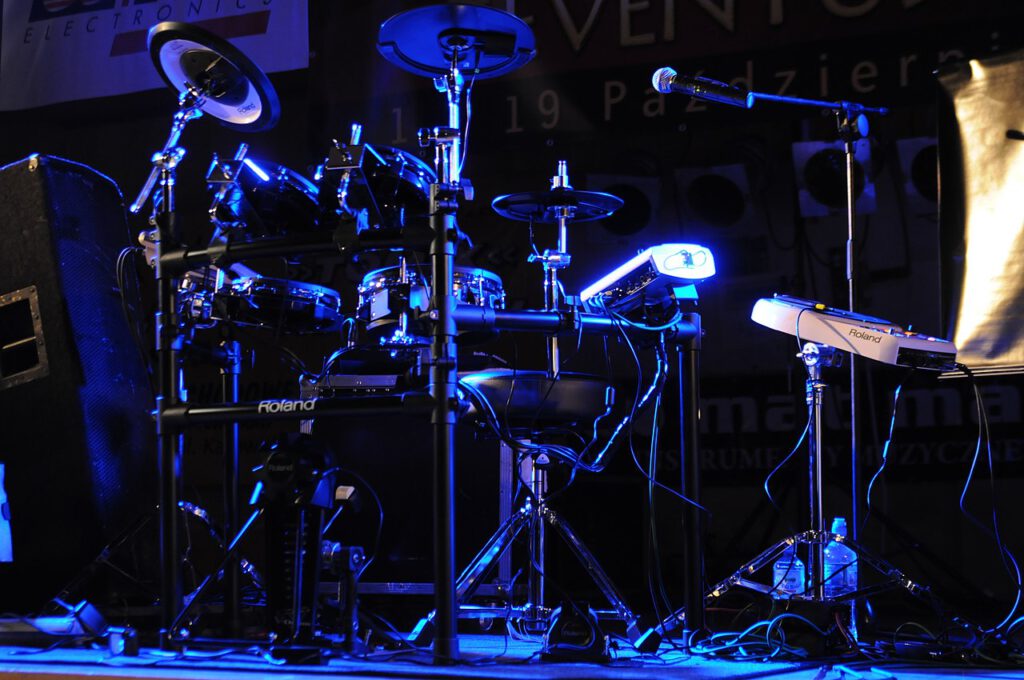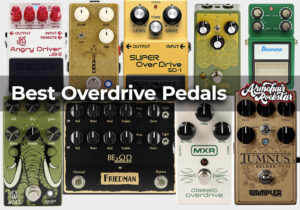The world of drumming has seen a significant shift with the advent of electronic drums. While traditional acoustic drums have been the mainstay for centuries, electronic drums have carved a niche for themselves, especially in the modern music scene. One of the most frequently asked questions by budding drummers and even seasoned professionals is, “Can you play electronic drums on stage?” The answer is a resounding yes. However, like any instrument, there are both benefits and challenges to consider.
Let’s delve into the world of electronic drums on stage.
Benefits of Playing Electronic Drums on Stage:
Versatility and Sound Options
One of the primary advantages of electronic drums is the vast array of sounds they offer. From classic acoustic drum sounds to synthesized beats and even world percussion, the possibilities are endless. This versatility allows drummers to adapt to various genres and moods without changing their drum kit.
- Genre Fluidity: Electronic drums allow drummers to transition seamlessly between genres in a single set. For instance, a drummer can move from a jazz ballad with brush sounds to a heavy metal track with deep, booming toms.
- Layering and Sampling: Many electronic drum kits allow drummers to layer sounds or trigger samples. This means a single pad can produce multiple sounds depending on how it’s struck.
Detailed Volume Control
Unlike acoustic drums, which can be overwhelmingly loud, electronic drums allow for precise volume control. This is especially beneficial in smaller venues or settings where sound levels need to be meticulously managed.
- Zone-specific Volume: Not only can the overall volume be controlled, but the volume of specific zones (like the snare or cymbals) can be adjusted independently. This is invaluable in live settings where certain elements of the drum kit need to stand out.
- Muting Capabilities: Some songs or parts of songs might require the drums to be muted. With electronic drums, this can be done seamlessly without any residual sound.
Compact and Portable
Electronic drum kits are generally more compact than their acoustic counterparts. This makes transportation and setup on stage quicker and more efficient.
- Fewer Microphones: With acoustic drums, each drum and cymbal often require a microphone. Electronic drums eliminate this need, simplifying the stage setup.
- Easy Customization: Electronic drum setups can be easily customized. Drummers can add or remove pads/modules based on the requirements of the performance.
Integration with Modern Technology
Electronic drums can easily be integrated with various music software and recording tools. This opens up a realm of possibilities for live looping, triggering samples, and even collaborating with DJs and electronic music artists.
- MIDI Capabilities: Electronic drums often come with MIDI capabilities, allowing drummers to control other MIDI instruments or devices during their performance.
- Real-time Sound Manipulation: With the right equipment, drummers can manipulate their sound in real-time, adding effects like reverb or delay as needed.
Consistent Sound
Electronic drums provide a consistent sound, irrespective of the venue or external conditions. This can be a boon for sound engineers and ensures that the audience hears the drum sound as intended.
- Tuning Stability: Electronic drums don’t detune over time or due to temperature/humidity changes. This ensures a consistent sound throughout the performance.
- Wear and Tear: Electronic drum pads generally show less wear and tear compared to acoustic drum skins, ensuring a consistent look and feel.
Challenges of Playing Electronic Drums on Stage
Dependency Beyond Just Power
Unlike acoustic drums, electronic drums require a power source. This can be a challenge in outdoor settings or venues with limited power outlets.
- Battery Life: If using battery-powered modules, drummers need to be wary of battery life and have replacements on hand.
- Cable Management: Electronic drums come with multiple cables for different pads and modules. Proper cable management is crucial to avoid mishaps on stage.
Latency Issues
Some electronic drum kits, especially older models, might have latency issues. This means there could be a slight delay between the drummer hitting the pad and the sound being produced.
Lack of Acoustic Feel
For drummers accustomed to acoustic drums, electronic drums might feel different. The rebound, stick response, and overall feel can take some getting used to.
Learning Curve
- Switching Modes: Transitioning between different sound modes or kits during a live performance requires practice.
- Adjusting to Feedback: Unlike acoustic drums where feedback is immediate, electronic drums might have a different kind of feedback, especially through headphones or stage monitors.
Technical Glitches
Like all electronic equipment, there’s always a risk of technical issues or malfunctions. It’s crucial to have backup plans or equipment in case of any unforeseen problems.
- Software Updates: Just like any tech device, electronic drum modules might require software updates. It’s essential to keep them updated to avoid glitches.
- Hardware Compatibility: Not all electronic drum components from different brands are compatible. Drummers need to ensure that all parts of their kit work seamlessly together.
Perception
Some purists believe that electronic drums lack the soul and warmth of acoustic drums. While this is subjective, it’s essential to be aware of such perceptions, especially when playing in settings where the audience has strong preferences.
The Choice is Yours with Electronic Drums
Playing electronic drums on stage is not only possible but offers a range of benefits that can enhance a drummer’s performance. However, it’s essential to be aware of the challenges and prepare accordingly. Whether you’re a drummer considering the switch or a music enthusiast curious about the evolution of drumming, understanding the dynamics of electronic drums on stage can offer valuable insights.
Remember, the choice between acoustic and electronic drums boils down to personal preference, the music genre, and the specific requirements of a performance. Both have their unique charm, and both can create magic on stage.




